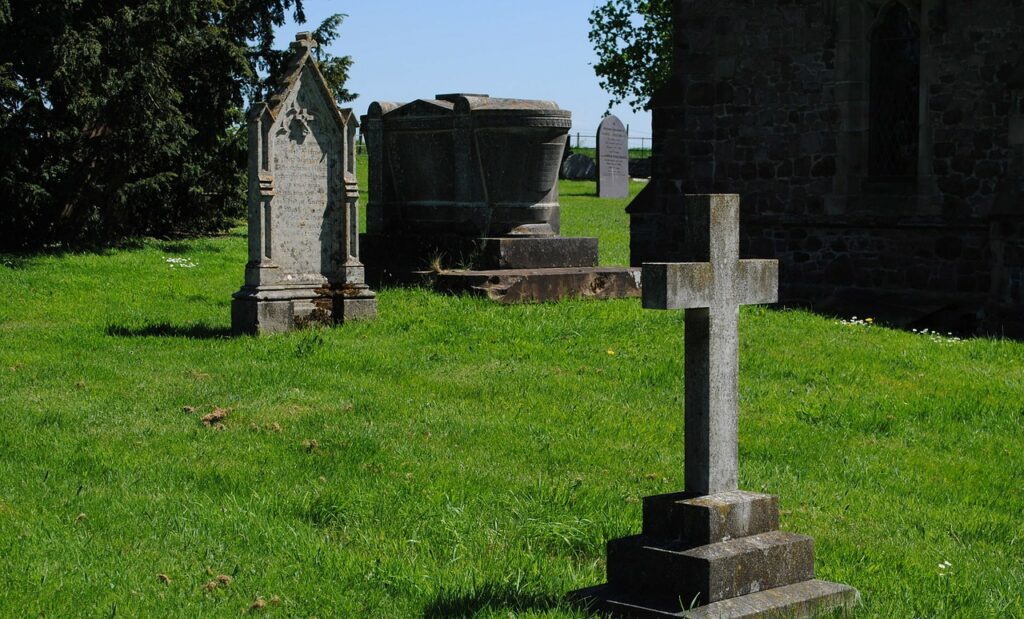SPOTLIGHT ON STARS AND CROSSES

Recently, in the magazine Kurier Kamieniarski, we dealt with the issue of inscribing data on tombstones. Popular and frequently used symbols are the star to indicate the date of birth and the cross symbol to indicate death. Let’s take a closer look at these symbols in our article today.
The Star
The star is a very popular ideogram often found on flags and signs. If we look at them more closely, we notice that they are mostly five-pointed stars which can be found on the flags of the United States and the European Union, among others.
However, it is not possible to identify the five-pointed star with the so-called pentagram. Although the external form of both symbols is essentially identical, unlike the five-pointed star, the pentagram includes a line connecting the arms. While the star is a completely neutral and generally accepted symbol with a wide range of meanings, the pentagram is often associated with magic and mysticism. This is probably the source of some people’s belief in the non-Christian character of this sign.
It is worth noting, however, that in the time of the first Christians the pentagram was used as a symbol of the five wounds of Christ, and that the bad reputation of this symbol was gained only later, namely in the 19th century, when the inverted pentagram, also called the black one, began to be likened to a goat’s head and considered a satanic symbol.
Another symbol we often encounter is the Star of David, which consists of six arms and is technically a hexagram. More precisely, it is two overlapping isosceles triangles. This symbol is also known as the Seal of Solomon. It appears on the Israeli flag, and it is today associated primarily with the Jewish religion, although its roots probably go back to Hindu Tantrism.
The asterisk before the date of birth on Christian tombstones is a reference to the star of Bethlehem and the birth of Jesus Christ. The use of a five-pointed star with one of the points pointing upwards is correct. However, care must be taken that such a star is not turned upside down (black pentagram). The Star of David on Christian tombstones is also not the best idea for obvious reasons.
Eight-pointed stars like the one in our picture are also not unusual. Although this type of ideogram may have deeper symbolism (the eight-pointed star may refer to the Mesopotamian goddess Ishtar, for example), there is no need to search for the deeper meaning of this symbol at all costs. Most of the stars we commonly see on tombstones today are meant to resemble the stars in the night sky, plainly and simply. The frequency of rays is often a purely aesthetic matter.
The Cross
This symbol needs no introduction. However, it is worth saying something about its variants or forms.
The Crux ordinaria, or Latin cross, is the most common version of this symbol commonly found in our culture. Its lower arm is longer than the others, unlike, for example, the Greek cross, also known as the classical cross, where all arms are the same length. There are many other types of Christian crosses (e.g., patriarchal, papal, orthodox) and the symbol of the cross is also found in other cultures and religions. The Egyptian Anch cross or the Celtic cross are apt examples.
As for the use of the cross symbol on Christian tombstones to mark the date of death, the Latin cross seems to be the most acceptable. However, you should beware of its inverted version, the so-called St. Peter’s Cross, which is often associated with Satanism.
Source: Kurier kamieniarski
Author: Kurier Kamieniarski | Published: 17.11.2020
